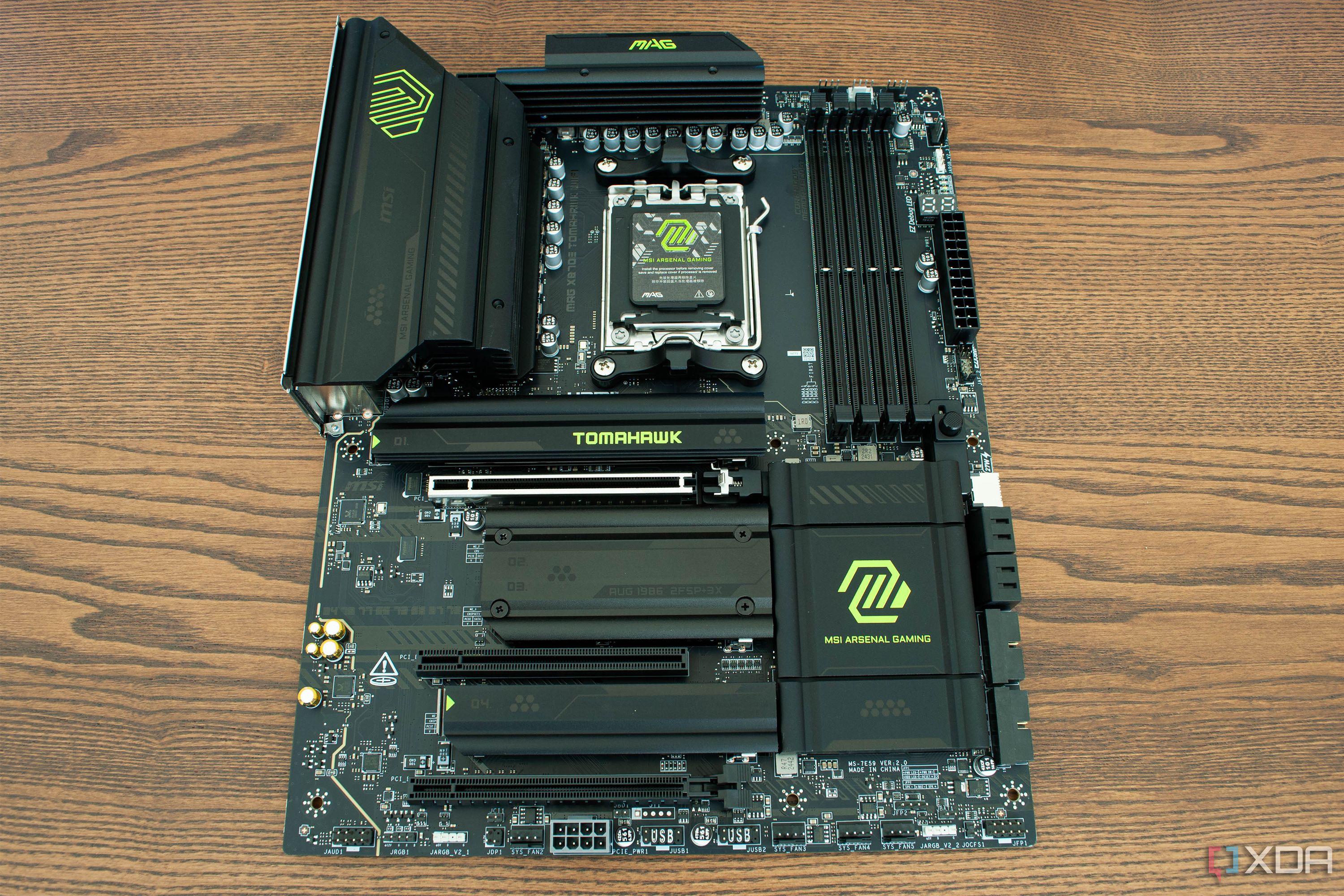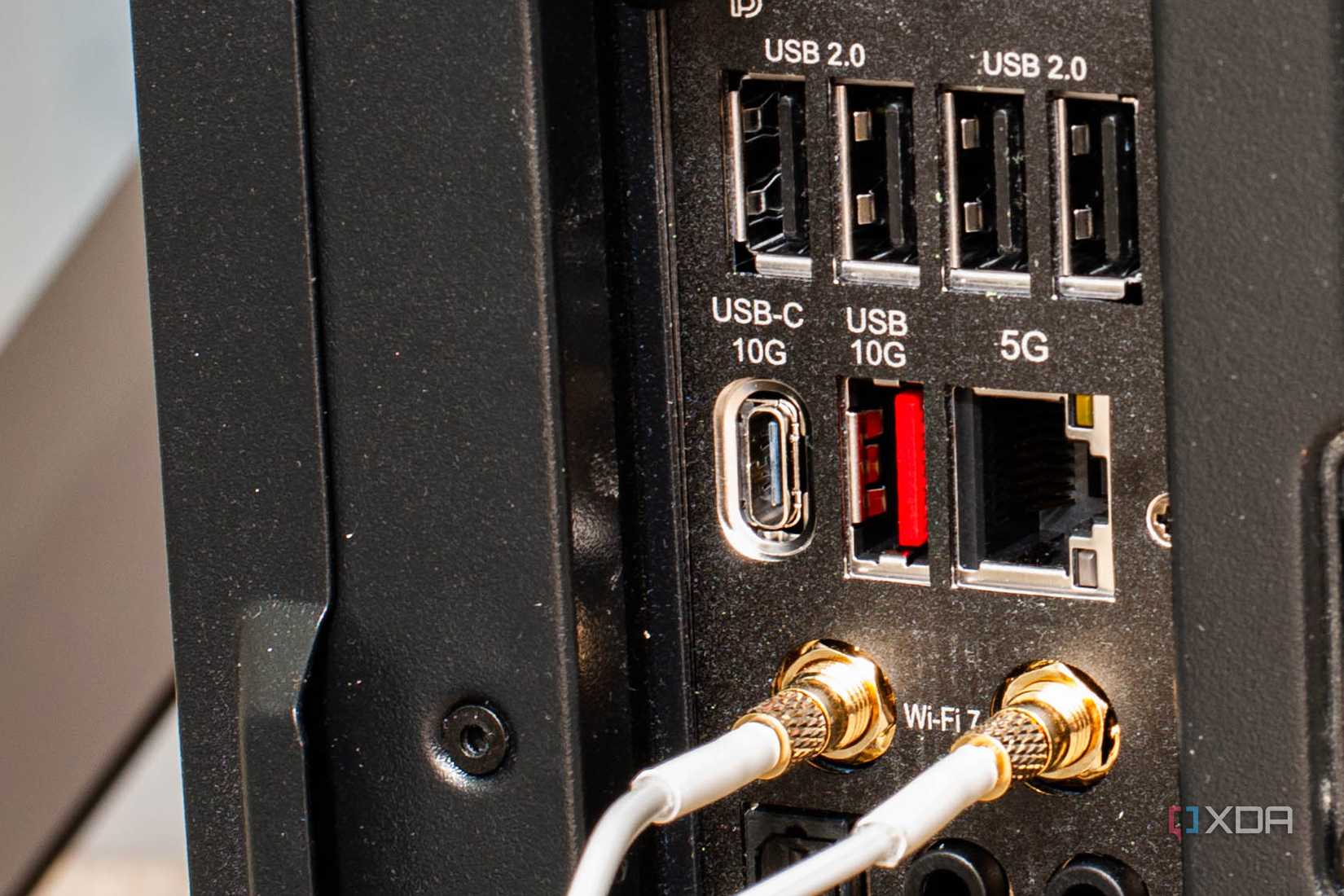3 motherboard features I overspent on (and never use) https://authenticflirtatious.com/xhtxd9d2?key=05130c4b33f9823d23cd52b41d6ac45e https://authenticflirtatious.com/qsae998i?key=32a3fa629544a9ca3dd289c598238c16 https://authenticflirtatious.com/q7p1jn72f?key=da5d5896246ede99cb9f4ebba2a40050 https://authenticflirtatious.com/xhtxd9d2?key=05130c4b33f9823d23cd52b41d6ac45e https://authenticflirtatious.com/qsae998i?key=32a3fa629544a9ca3dd289c598238c16 https://authenticflirtatious.com/q7p1jn72f?key=da5d5896246ede99cb9f4ebba2a40050

Until recently, I had always thought that spending extra on a premium motherboard was a smart investment. From more robust VRMs for stability to extra PCIe lanes and faster networking, the marketing material made sense for the most part. I assumed every cutting-edge feature would make my motherboard, and, by extension, my PC, future-proof. Even if some of the features were overkill when I bought the motherboard, I thought they'd prove useful down the line.
But after using my PC for about five years, I've realized most of those premium features never actually mattered. Even today, I don't take advantage of some of the extras my old X570 motherboard has to offer. Looking back, a mid-range B550 board would've been adequate for my needs. So, if you're in the market for a new AM5 or LGA1851 motherboard today, make sure you don't overspend like I did. Here are some of the features I paid a premium for but never really used in the long run.
Extra PCIe lanes
I thought I'd need them for a secondary SSD down the line
One of the main reasons why I chose an X570 motherboard over a B550 one was the additional PCIe 4.0 lanes it offered. Unlike B550 boards, which only give you PCIe 4.0 lanes from the CPU for the graphics card and the primary M.2 slot, X570 extends PCIe 4.0 support through the chipset as well. This meant that not only the primary SSD but also any secondary NVMe drive I installed down the line would run at full PCIe 4.0 speeds. But in reality, I never needed a second SSD in the last five years, let alone one that relied on PCIe 4.0.
So I ended up paying more for a motherboard purely because I thought I'd take advantage of a spec that I might need later. Fast-forward to 2025, and we already have faster PCIe 5.0 SSDs, with high-end motherboards fully equipped to support them. At this point, I'd probably upgrade my motherboard first before even considering a second high-speed NVMe drive. This is exactly why I don't suggest splurging on high-end X670E or X870E boards just for the extra PCIe 5.0 lanes, unless you're certain you'll install a second PCIe 5.0 drive. For a single PCIe 5.0 SSD and GPU configuration, a cheaper B850 board is more than adequate.
Robust VRMs with overkill power delivery
I never pushed my CPU enough to stress the VRMs anyway
3 motherboard features I overspent on (and never use)

Until recently, I had always thought that spending extra on a premium motherboard was a smart investment. From more robust VRMs for stability to extra PCIe lanes and faster networking, the marketing material made sense for the most part. I assumed every cutting-edge feature would make my motherboard, and, by extension, my PC, future-proof. Even if some of the features were overkill when I bought the motherboard, I thought they'd prove useful down the line.
But after using my PC for about five years, I've realized most of those premium features never actually mattered. Even today, I don't take advantage of some of the extras my old X570 motherboard has to offer. Looking back, a mid-range B550 board would've been adequate for my needs. So, if you're in the market for a new AM5 or LGA1851 motherboard today, make sure you don't overspend like I did. Here are some of the features I paid a premium for but never really used in the long run.
Extra PCIe lanes
I thought I'd need them for a secondary SSD down the line
One of the main reasons why I chose an X570 motherboard over a B550 one was the additional PCIe 4.0 lanes it offered. Unlike B550 boards, which only give you PCIe 4.0 lanes from the CPU for the graphics card and the primary M.2 slot, X570 extends PCIe 4.0 support through the chipset as well. This meant that not only the primary SSD but also any secondary NVMe drive I installed down the line would run at full PCIe 4.0 speeds. But in reality, I never needed a second SSD in the last five years, let alone one that relied on PCIe 4.0.
So I ended up paying more for a motherboard purely because I thought I'd take advantage of a spec that I might need later. Fast-forward to 2025, and we already have faster PCIe 5.0 SSDs, with high-end motherboards fully equipped to support them. At this point, I'd probably upgrade my motherboard first before even considering a second high-speed NVMe drive. This is exactly why I don't suggest splurging on high-end X670E or X870E boards just for the extra PCIe 5.0 lanes, unless you're certain you'll install a second PCIe 5.0 drive. For a single PCIe 5.0 SSD and GPU configuration, a cheaper B850 board is more than adequate.
Robust VRMs with overkill power delivery
I never pushed my CPU enough to stress the VRMs anyway
One of the biggest selling points of higher-end motherboards like the X870E and Z890 is their VRM design. When I bought my Asus ROG Strix X570-E motherboard for my PC, I was convinced that its upgraded VRM setup with large heatsinks would offer better stability, cooler operation, and some headroom for overclocking in the future. I didn't want my CPU running into power limits, so paying more for a board with stronger power delivery seemed like a smart choice.
In reality, though, I never came close to pushing those VRMs hard enough to justify the extra cost. Modern Ryzen CPUs already boost their clocks to their limits out of the box, and the gains from manual overclocking are nowhere near what they were a decade ago. Considering I live in a hot country and my processor occasionally touches 80C at stock while gaming, I didn't even bother trying to overclock it. In fact, I did the opposite — I undervolted my CPU to shave a few degrees off and keep fan noise under control. All that extra power delivery ended up being wasted potential in my build.
High-speed LAN
What's the point if my ISP doesn't offer plans beyond 1Gbps?

Lastly, I leaned toward the Strix X570-E because it had a 2.5G Ethernet port, even though my ISP didn't offer any plans beyond 1Gbps. At the time, I thought my ISP would roll out faster plans within a couple of years, so I even bought a long Cat7 cable at a premium just to be prepared. Unfortunately, even today, the fastest plan my ISP offers caps out at 1Gbps, and I've never had the chance to take advantage of the 2.5G port on my premium motherboard.
It's not like I really needed a faster internet connection, anyway. For gaming, downloads, and 4K streaming, Gigabit Ethernet is still more than enough, and latency depends far more on the ISP than the port itself. Looking back, I essentially paid extra for a networking feature that remained useless since day one. A cheaper B550 board with standard Gigabit LAN would have delivered the exact same experience. So, unless you already have a high-speed internet plan that exceeds 1Gbps, there's no point in paying extra for a board with 5G or 10G Ethernet.
Future-proofing seemed smart, but it didn't pay off
If there's one thing that I've learned from buying higher-end motherboards, it's that there's no point paying extra for features you may or may not need later. As you can tell from my experience, chasing more PCIe 4.0 lanes wasn't worth it since PCIe 5.0 is the latest standard. And it won't be long before we see motherboards supporting the next-generation PCIe 6.0 standard. You can apply the same logic to other "premium" features too. Back then, having a 2.5G Ethernet port was considered a luxury, but we now have 5G and 10G Ethernet on high-end boards. Now that I think of it, I could've definitely used the money I wasted toward a higher-end CPU. So, please don't make the same mistake I did. If you're an average PC user like me, buy a mid-range board that fits your needs today and leave the high-end ones to overclockers and enthusiasts.
























0 Comments